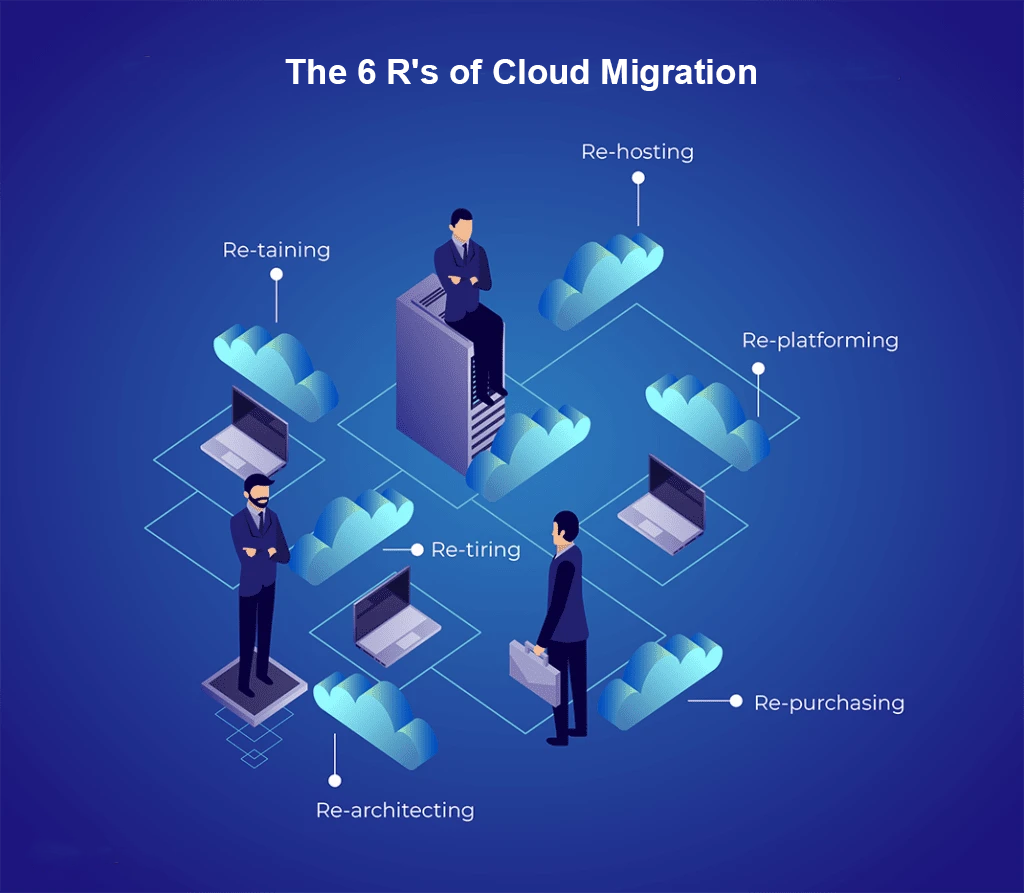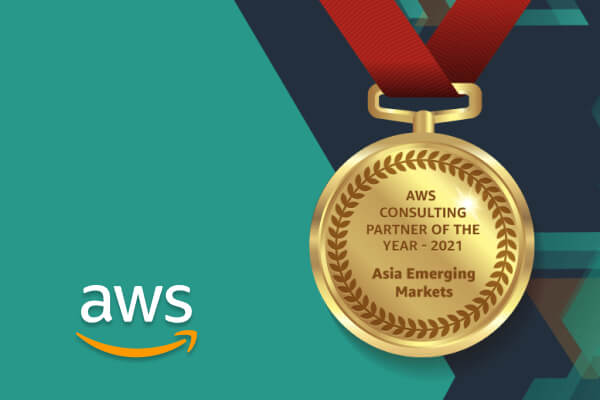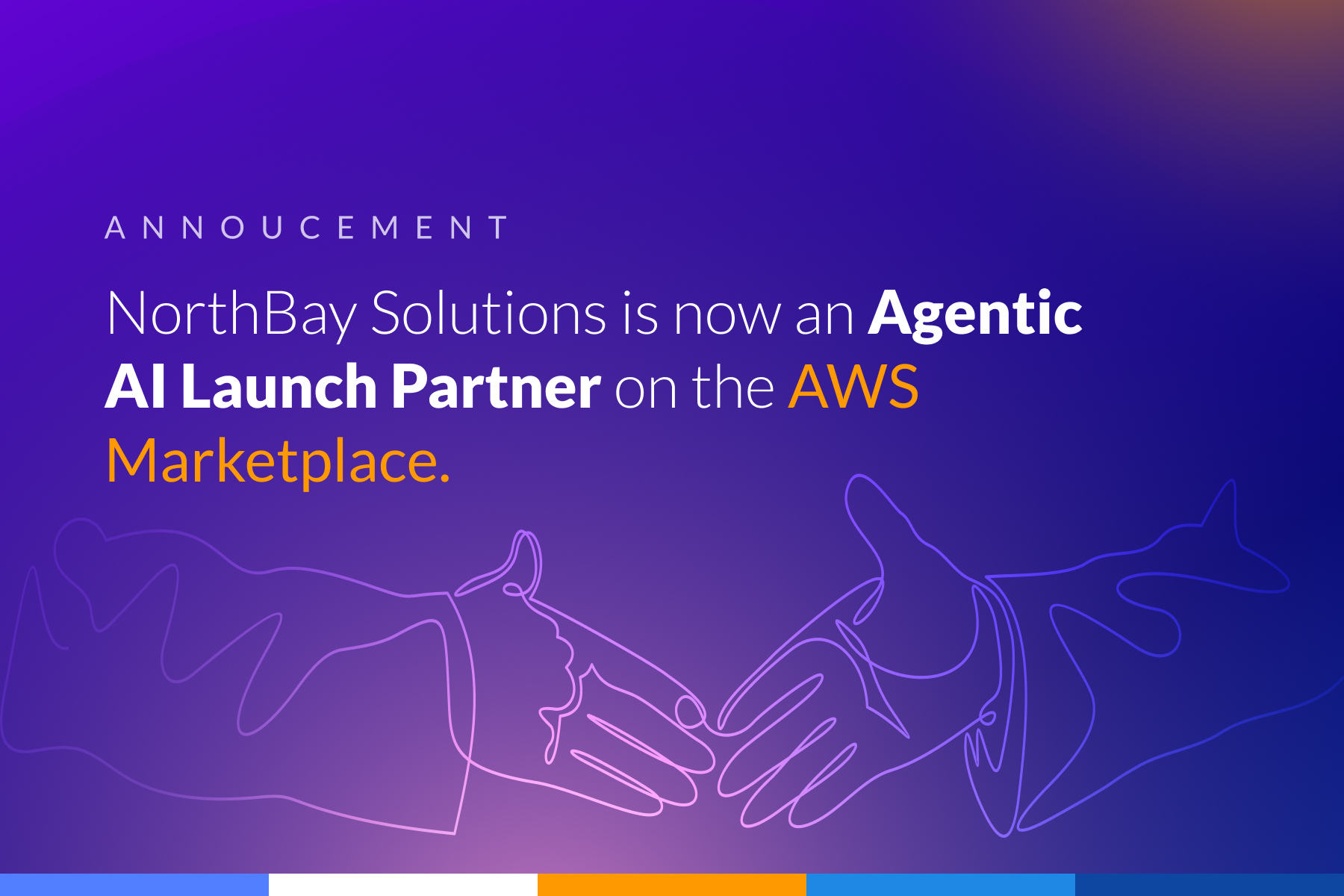
In the digital-first world, cloud migration is essential for businesses looking to innovate, reduce costs, and remain agile. But developing an effective cloud migration plan requires more than just moving applications from on-premises to the cloud; it requires a clear strategy. At NorthBay Solutions, we empower businesses to navigate this shift with ease, combining our expertise in cloud migration with a clear, structured approach to maximize value and minimize disruption.
One of the most effective frameworks for cloud migration is known as the 6 R’s: Rehosting, Replat forming, Repurchasing, Refactoring, Retiring, and Retaining. Each strategy addresses different application needs, allowing organizations to tailor their cloud migration strategy to meet specific goals. Here’s a comprehensive look at each approach to help you decide which is right for your organization.
Understanding the 6 R’s of Cloud Migration
1. Rehosting (Lift-and-Shift)
Rehosting, or “lift-and-shift,” involves moving applications as-is to the cloud with minimal changes. This approach is often used by organizations that want to quickly scale their cloud migration without significant upfront adjustments to their applications. Companies like GE Oil & Gas have seen quick cost savings by rehosting; for example, they reduced costs by about 30% just by moving to the cloud without additional optimizations.
Automation tools like CloudEndure Migration or AWS VM Import/Export can streamline the rehosting process. While rehosting doesn’t initially alter application architecture, cloud migration lays the foundation for future optimizations once your teams have a better handle on the cloud environment.
2. Replatforming (Lift-Tinker-and-Shift)
Replatforming, sometimes called “lift-tinker-and-shift,” takes rehosting a step further by making small adjustments to achieve specific benefits. For instance, moving to a managed database service like Amazon RDS or switching to a different application server can save management time and reduce costs.
Foundant Technologies partnered with NorthBay Solutions to modernize and migrate its legacy .NET applications from Rackspace to AWS, aiming to overcome scalability limits and enable rapid growth. NorthBay employed a replatforming approach, adapting Foundant’s .NET architecture to run on Amazon ECS containers—an innovative solution given the challenge of moving legacy applications. By leveraging AWS services like ECS, EC2, and Aurora, NorthBay achieved a seamless migration that boosted application performance by 30%, positioning Foundant for scalable growth and highlighting the value of replatforming in Application Portfolio Rationalization (APR).
3. Repurchasing (Moving to a Different Product)
Repurchasing means switching applications to a different platform, often opting for a Software-as-a-Service (SaaS) solution. For instance, moving a CRM to Salesforce or an HR system to Workday can save time and reduce management costs, especially if the SaaS option provides the needed features out of the box.
Many organizations find that repurchasing simplifies their tech stack by offloading application management, allowing teams to focus on core business functions rather than infrastructure maintenance.
4. Refactoring (Re-architecting for the Cloud)
Refactoring, or re-architecting, involves redesigning an application to take full advantage of cloud-native features. This strategy is usually chosen when there’s a need for extensive scalability, performance, or new features that are hard to achieve in the application’s current setup.
For example, migrating from a monolithic to a microservices or serverless architecture can improve agility and business continuity. Although refactoring requires a more significant investment, it can offer substantial long-term benefits, especially for applications that are critical to business operations and have strong product-market fit.
5. Retiring (Decommissioning)
Not all applications need to make the move to the cloud. During your migration planning, you may find that certain applications are no longer relevant to the business. Studies show that as much as 10–20% of an enterprise’s IT portfolio may no longer be useful.
Retiring unused applications can reduce costs, simplify the migration process, and free up resources for other priorities. By retiring outdated applications, your organization can focus on managing and securing only those assets that actively add value.
6. Retaining (Revisit Later or Do Nothing)
Finally, retaining an application—meaning leaving it as-is—may be the best choice for certain legacy systems or recent investments that aren’t ready for migration. If an application is still under depreciation, or if migrating it doesn’t make sense given current business priorities, retaining it allows you to revisit later.
As cloud infrastructure becomes more integrated, the number of applications retained is likely to decrease, but it’s essential to make migration decisions based on what aligns with your business strategy.

Choosing the Right Strategy for Your Cloud Migration Plan
Each of the 6 R’s has unique benefits and fits different scenarios, so it’s essential to evaluate your applications and business goals carefully. A well-defined cloud migration plan can transform your business, offering flexibility, cost savings, and a competitive edge. By leveraging the 6 R’s framework, your organization can achieve a seamless, efficient migration aligned with your strategic objectives.
An Application Portfolio Rationalization (APR) is a strategic approach to cloud migration that involves evaluating each application in a company’s portfolio to decide on the optimal path for moving it to the cloud. By assessing factors such as cost, performance, business value, and technical debt, companies can determine the best cloud migration approach for each application, ensuring that resources are allocated effectively and that migration efforts are aligned with business objectives. APR is especially valuable for large enterprises or organizations with extensive legacy applications, as it helps prioritize workloads and streamline the migration process, making it more efficient and cost-effective.
Benefits of Cloud Migration
Migrating to the cloud delivers numerous benefits beyond cost savings. It enhances scalability, offers greater flexibility, improves security, and allows teams to focus on innovation rather than AWS infrastructure maintenance. With the right strategy in place, your cloud migration can set the foundation for a more agile, responsive business model.
At NorthBay Solutions, we specialize in helping companies develop tailored cloud migration strategies that align with their goals. Our experience in AWS cloud services and cloud managed solutions ensures your migration is not only smooth but optimized for long-term success.
About NorthBay Solutions
NorthBay Solutions is a leading provider of cutting-edge technology solutions, specializing in Agentic AI, Generative AI MSP, Generative AI, Cloud Migration, ML/AI, Data Lakes and Analytics, and Managed Services. As an AWS Premier Partner, we leverage the power of the cloud to deliver innovative and scalable solutions to clients across various industries, including Healthcare, Fintech, Logistics, Manufacturing, Retail, and Education.
Our commitment to AWS extends to our partnerships with industry-leading companies like CloudRail-IIOT, RiverMeadow, and Snowflake. These collaborations enable us to offer comprehensive and tailored solutions that seamlessly integrate with AWS services, providing our clients with the best possible value and flexibility.
With a global footprint spanning the NAMER (US & Canada), MEA (Kuwait, Qatar, UAE, KSA & Africa), Turkey, APAC (including Indonesia, Singapore, and Hong Kong), NorthBay Solutions is committed to providing exceptional service and support to businesses worldwide.





